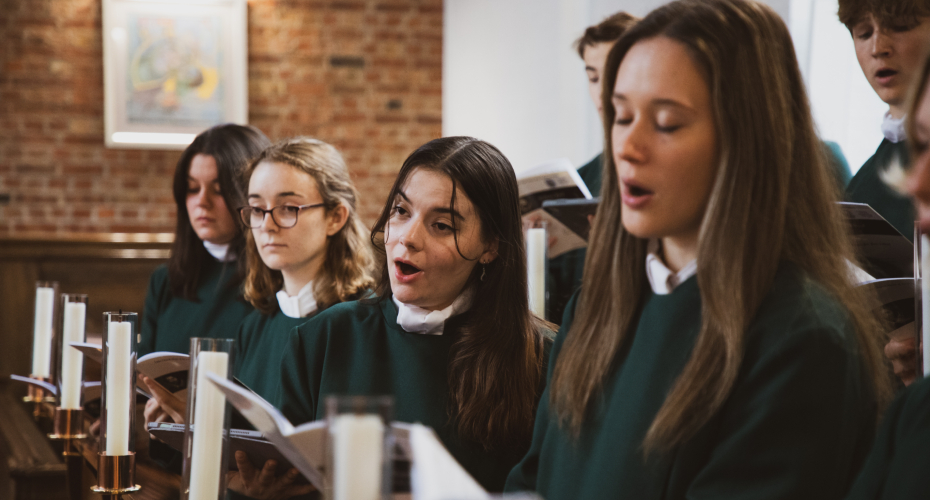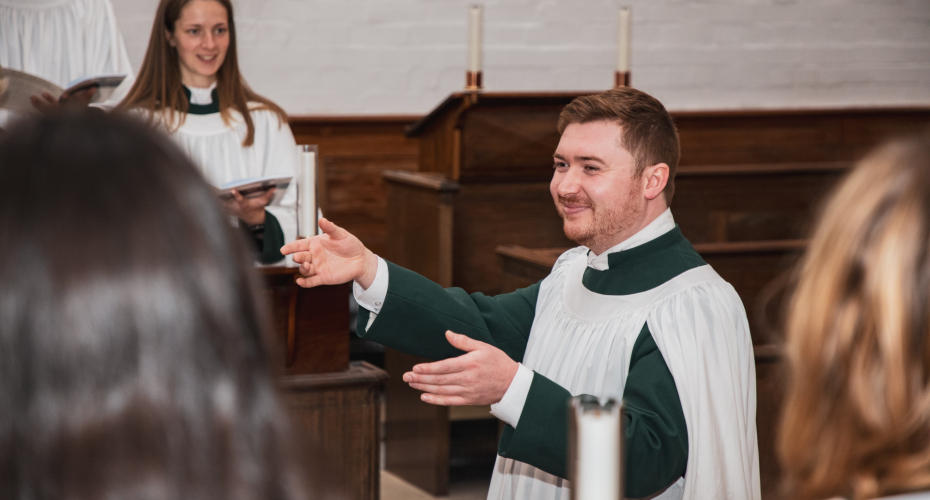For the first time in nearly five centuries, Buckland Abbey in Devon will resonate once more with the sacred sounds of monastic music, thanks to research into a rare 15th-century manuscript and a collaboration between the National Trust and the University of Exeter.
The Cistercian abbey, now in the care of the National Trust, was once alive with music, the resident monks and choirboys singing for hours every day. But it fell silent at the Dissolution of the Monasteries, when every abbey and priory in England was shut down by King Henry VIII.
Now, a centuries-old book once owned and used by the abbey, part of the British Library's collection, will return 'home' on loan to Buckland Abbey for the first time since the Dissolution with its music heard once more thanks to the University of Exeter Chapel Choir.
Known as a 'customary', the richly decorated Buckland Book (c. 1450) contained the instructions the monks needed to carry out their daily religious rituals and services. But unusually, it also contains a rare collection of medieval music copied and added to the book in the early Tudor period.
University of Exeter historian, Professor James Clark, first noticed this while researching Buckland Abbey's monastic past on behalf of the National Trust. Hardly any of the music performed in England's medieval monasteries now survives because their books were lost or destroyed during the Tudor Reformation.
The music is in a style called 'plainchant', with single lines of music for monks or priests to sing all together. What makes the music more unusual is that rather than following the rigid liturgical structure of the time, with particular pieces sung at different times of the day, the monks curated a unique sequence of chants drawn from various sources.
National Trust Research Officer and music historian Daisy Gibbs said: "Whoever compiled this collection seems to have been unusually creative, pulling together words and music from many different sources.
"The pieces found in the book ask for God's mercy, forgiveness and protection from harm. They share a real feeling of anxiety and fear. It looks as though they were once sung as a complete sequence, perhaps to help the monks through a crisis of some kind. We still have work to do to find out exactly how unusual this collection is."

One suggestion is that the music was intended as a response to the sweating sickness, which broke out repeatedly in Tudor England. It was lethal - often killing its victims within 24 hours - and seemed to target young and middle-aged men.
The Buckland music is also unusual because it can be connected to a specific musician who performed it, the abbey's choir master and organist from this time Robert Derkeham.
Working in partnership, the National Trust and University researchers have now transcribed the music for its first performance in nearly five centuries, and the University of Exeter Chapel Choir has recorded the music, bringing the voices of the long-lost monks back to life.
The recording will form part of the soundtrack to a new exhibition featuring the Buckland Book, Opening the Buckland Book: Music and community in a Tudor monastery (5 July - 31 October).
The Chapel Choir will also perform the music live in Buckland Abbey's medieval Great Barn on 16 and 17 August. The event is supported by the Arts and Humanities Research Council through an Impact Accelerator Account Award.
Professor Clark, of the Department of Archaeology and History and Director of the Society and Cultures Institute, said: "Having searched the archives for traces of England's lost abbeys, it is very exciting to recover something of their sound. Before the Tudor Reformation, in every part of England and Wales there were places like this dedicated to creative music-making and performance. Through this research we can now learn much more about this tradition and what it meant not only for the musicians but also for the surrounding communities that shared in their art."

Michael Graham, the University's Director of Chapel Music, added: "Although the music is written down using the same notation that's still used in the modern Catholic Church, it doesn't give any instructions about rhythm or dynamics, so we had to make decisions about how the pieces should sound. This is one of the most interesting, and also most challenging, parts of performing music that's over 500 years old!
"Our students have really enjoyed being involved in the project, and have relished the opportunity to explore this rich vein of music and bring it to life in our chapel on campus."
Daisy Gibbs concluded: "There's still work to be done to find out what happened to the Buckland Book between the closure of the abbey and when it was sold to what was then the library of the British Museum in 1753. Perhaps one of the monks took the book with him, and it remained quietly on a shelf after the hoped-for reversal of the Dissolution didn't come.






